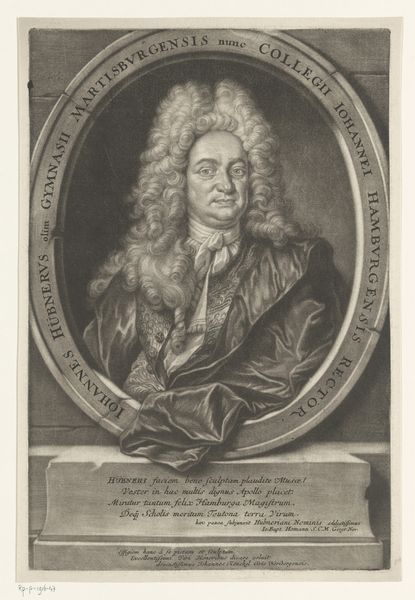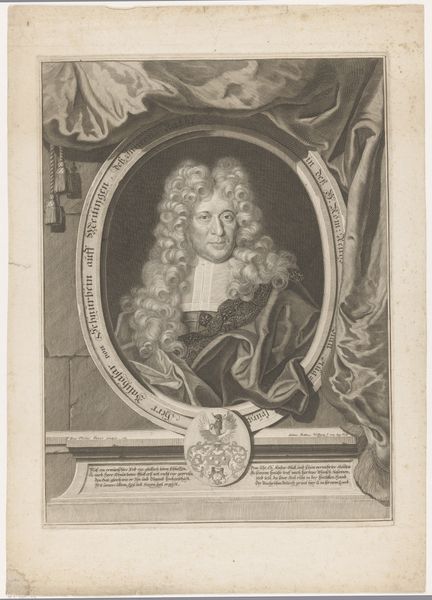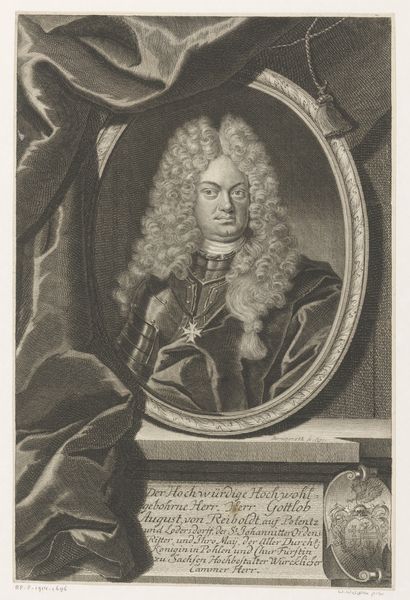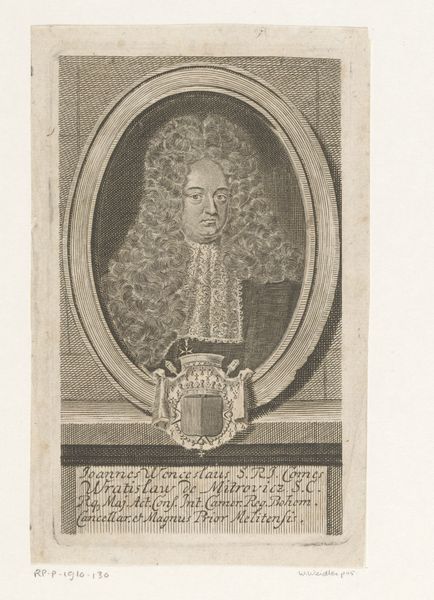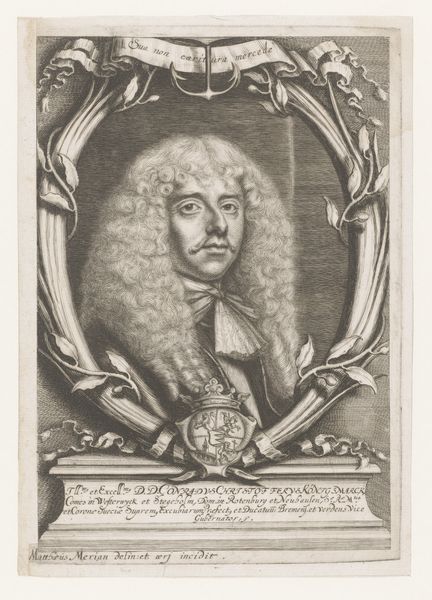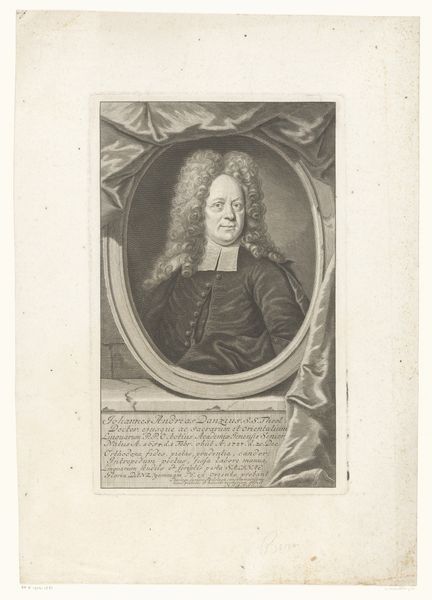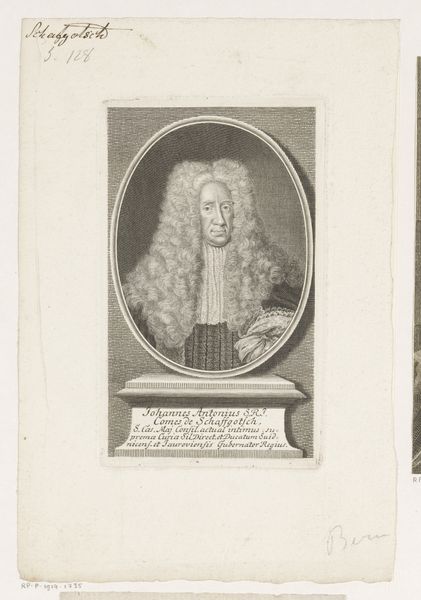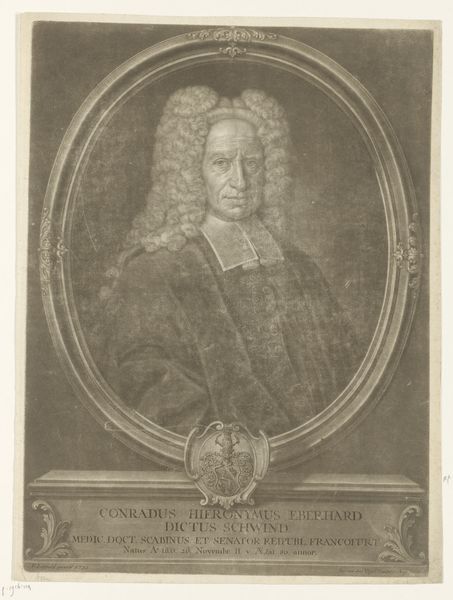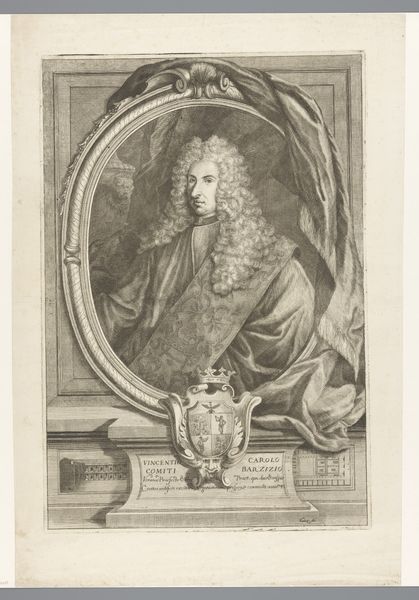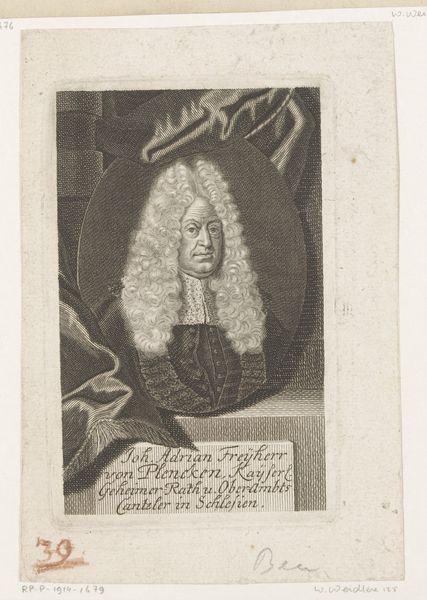
print, engraving
#
portrait
#
baroque
# print
#
old engraving style
#
portrait reference
#
portrait drawing
#
history-painting
#
academic-art
#
engraving
Dimensions: height 150 mm, width 98 mm
Copyright: Rijks Museum: Open Domain
Curator: Welcome. Today we will discuss this engraving of Johann Burchard Mencke, rendered by Martin Bernigeroth around 1712. The print now resides in the collection of the Rijksmuseum. Editor: My immediate impression is one of baroque excess. Look at that cascading wig! It practically spills out of the oval frame. It strikes me as undeniably performative, a kind of staged authority. Curator: Indeed. Note how Bernigeroth's use of hatching and cross-hatching creates an almost tangible texture, particularly in the depiction of Mencke's garments. The oval frame itself, adorned with foliage, sets up a hierarchical separation, emphasizing the sitter's status. Editor: I am intrigued by Mencke himself. His posture conveys confidence, but is it entirely self-assured, or slightly defiant? I wonder about his role in that era of social change. It reads to me as an attempt to define his persona, not just for himself but for posterity in that climate. Curator: Mencke was a prominent figure, a professor, historian, and advisor. Bernigeroth's skill lies in capturing the gravitas expected of such an intellectual and statesman in this academic-art style print. Editor: Still, beyond the technical brilliance and social positioning, I find myself reflecting on the colonial context of such portraiture. Here we see someone defining themselves as an actor in shaping Britain. It raises questions about the very structures upholding this kind of portraiture, in those structures of history itself. How are figures of authority—such as Mencke, here immortalized— complicit within a legacy of exploitation and domination? Curator: Your observations resonate. We should not ignore the historical context which invariably touches such subjects. At the same time, considering the work on its own terms—analyzing Bernigeroth’s command of line and the symbolic language inherent in portraiture – enriches our comprehension. The print balances formality and artistry; to dwell on these facets amplifies the engraving’s compelling dynamic. Editor: Agreed. By dissecting these intersections, by accepting paradoxes—the technique, the composition and the underlying assumptions —the engraving urges us to confront the complexities that come with images in institutions. We all participate within these systems; such engravings make visible those dynamics.
Comments
No comments
Be the first to comment and join the conversation on the ultimate creative platform.
